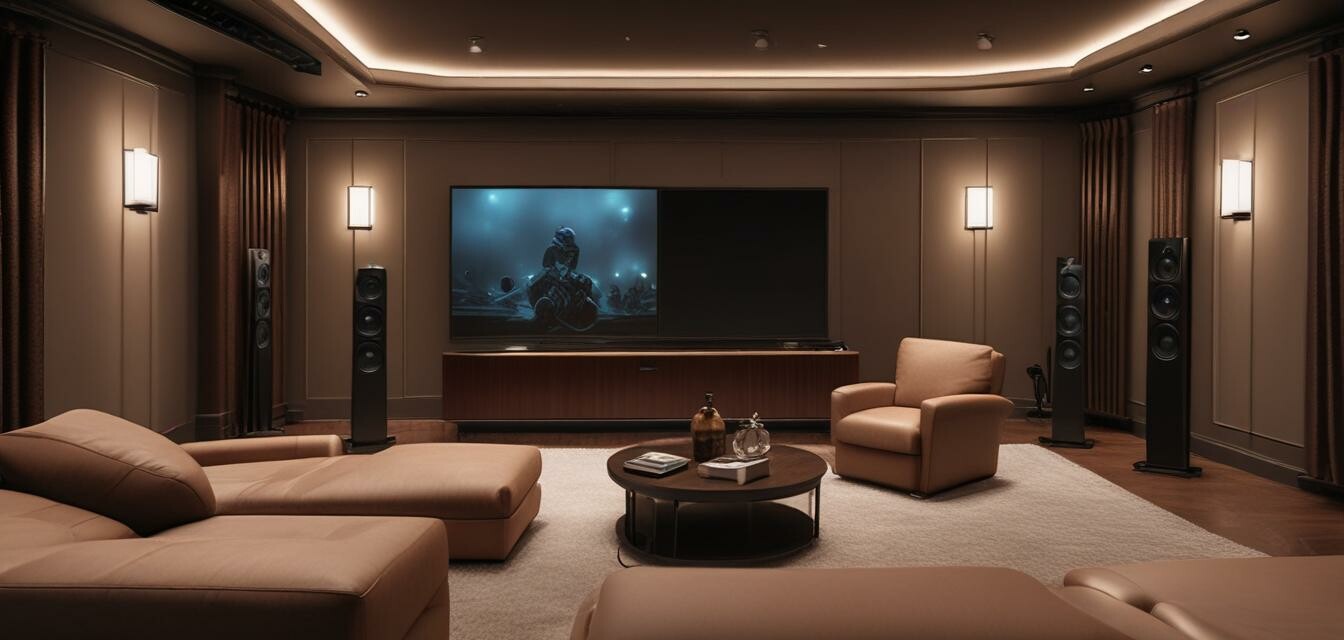
Setting the Perfect Sound Levels in Your Home Theater
Key Takeaways
- Understanding sound fundamentals: Learn about volume levels, frequency balance, and acoustic treatments.
- Speaker placement: Proper positioning can dramatically improve sound quality.
- Calibration: Use tools and methods to ensure your sound system is finely tuned.
- Room acoustics: Address reflective surfaces and other obstacles to optimize sound.
Creating the ultimate home theater experience isn't just about having the best equipment. It's equally critical to set the perfect sound levels. By understanding how to balance your audio components, you can achieve a rich, immersive sonic environment. Whether you're enjoying a blockbuster movie or listening to your favorite music, a well-calibrated sound system will elevate the entire experience. This guide will walk you through various strategies to optimize sound levels in your home theater.
Understanding Sound Fundamentals
Before diving into the setup process, it's important to familiarize yourself with some key sound concepts:
- Volume Level: Refers to the loudness of the audio. Achieving the right balance ensures clarity without distortion.
- Frequency Range: Ranges from bass (low frequencies) to treble (high frequencies). A well-balanced system delivers all frequencies evenly.
- Dynamic Range: The difference between the quietest and loudest sounds. It's important for capturing details in quiet scenes.
Speaker Placement
The placement of your speakers can significantly influence your home theater’s sound quality. Here are some general guidelines to follow:
| Speaker Type | Recommended Placement |
|---|---|
| Front Speakers | At ear level, 22-30 degrees from the viewing position. |
| Center Channel | Directly above or below the screen, angled toward the listener. |
| Surround Speakers | Side walls or slightly behind the seating area, 3-4 feet above ear level. |
| Subwoofer | Near a wall for better bass response, experimentation required for best results. |
Calibration Techniques
Calibration is key to achieving balanced sound levels in your home theater. Here are some effective calibration techniques:
- Use a Sound Level Meter: This device measures decibel levels across different frequencies. It helps in achieving a balanced sound stage.
- Run Built-in Calibration Software: Many modern receivers come with setup software that helps automatically calibrate the system.
- Manual Tuning: Experiment with settings and listen for clarity and balance. Adjust levels according to your preferences.
Addressing Room Acoustics
Your room's acoustics greatly influence sound quality. Here are some practical tips to improve sound in your space:
Tips for Optimizing Room Acoustics
- Use acoustic panels to reduce echoes and reflections.
- Place rugs or carpets to absorb sound and reduce hard surface reflections.
- Install bass traps in corners to manage low-frequency buildup.
- Strategically position furniture to diffuse sound waves.
Testing Your Setup
Once your system is set up, it's crucial to test the setup. Consider the following steps:
- Play a reference audio track that you are familiar with.
- Listen critically for clarity, balance, and immersion.
- Make adjustments based on your preferences and room characteristics.
- Repeat the process with different types of audio to cover various frequency ranges.
Pros
- Enhanced audio clarity for movies and music.
- Improved surround sound experience.
- Customization options for personal preferences.
Cons
- Initial setup can be time-consuming.
- Requires multiple adjustments and testing.
- Equipment costs can add up.
Common Mistakes to Avoid
While setting up sound levels, here are some common pitfalls to steer clear of:
- Ignoring room acoustics: Failing to consider the size and shape of your room can lead to ineffective sound balance.
- Overpowering bass: Excessive bass can cause distortion; aim for a balanced sound.
- Incorrect speaker connection: Ensure all speakers are properly connected to avoid phase issues.
By understanding the fundamentals of sound, optimizing speaker placement, and fine-tuning your system, you will elevate your home theater experience to the next level. For even more guidance, explore our Setup Tips category, where you’ll find a wealth of resources tailored to your needs.
Conclusion
Achieving the perfect sound levels in your home theater requires a blend of knowledge, strategy, and experimentation. Whether you're setting up a new system or adjusting an existing one, the tips and techniques provided in this article will help you create an immersive sound environment. Enjoy your cinematic journeys with rich, perfectly balanced audio.

